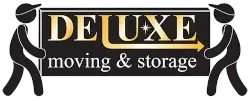For many families, moving can be a stressful time. Not only do you have to pack up your entire life into one box truck, but you also have to worry about getting all your mail switched over, getting the kids registered for their new school, updating any personal I.D. documents and of course, finalizing any paperwork for your new home. Lucky for you, doing a quick Google search results in many sources for tips and tricks to make your move as smooth as possible.
But not all types of moves have the same extensive database of tips and tricks.
Corporate moves happen regularly as companies grow and it’s not uncommon for a company to move multiple times to accommodate their growing employee count. But doing a quick Google search doesn’t result in the same number of tips and tricks as it does for family moves. That’s where we come in. With years of experience moving both families and corporate clients, we’ve compiled a list of tips and tricks below that we think will help most brands transition smoothly from one office to the next. And while a move for a local business is much different than it is for a national corporation, these tips and tricks should prove to be beneficial regardless of your company’s size.
1. Hire a Mover – First things first, as soon as you have your new office secured, hire a mover or at least get in contact with one for a quote. This will ensure your moving date is reserved and save you from scrambling last minute to find a mover.
2. Inform Employees & Clients – Once you’ve chosen a moving date, inform your employees and clients of the move. If your move is scheduled for mid-week, make sure your employees know what day to start at the new office and make sure any clients who may have a meeting scheduled know to go to your new office. We recommend sending out constant reminders leading up to your move to ensure employees and clients don’t forget.
3. Inform Any Service Providers – Once your employees and clients are aware of the move, the next step is to start informing service providers of your move. This could include water deliveries, internet providers, landscaping, janitorial, etc. And if you plan on continuing to use their service leading up to your move, ensure they know the exact day that you will be switching from one office to the next.
4. Secure Confidential Documents – Before bringing in any external personnel to assist you with your move, ensure any and all confidential documents or paperwork are secured and locked in a filing cabinet or bin.
5. Have Employees Pack Up Their Personal Belongings – To ensure no employee’s personal belongings get lost or damaged in the move, have them pack up any desk decorations or other personal items and transport them themselves to the new office.
6. Create a Floor Plan for Your New Office – The majority of corporate moves are for more space. So, while your new office is empty, take the time to measure and draw out a new floor plan, so come moving day you know exactly where everything is going. Once you’re happy with your new floor plan, take the time to label each box with the corresponding floor and room number.
7. Assess Existing Office Furniture and Decide What Needs to be Replaced – Once your floor plan is laid out, take a walk through your current office and assess every piece of office furniture. Mark pieces that are good to move to your new office as well as ones that should be thrown out. This will give you a good idea of how many new pieces of furniture you need to purchase before moving into your new office. This is also a good time to purge any old decorations, electronics and anything else that may need to go.
8. Make a List of Work That Needs to be Done Before Moving Into Your New Office – Just like how homeowners plan to paint and do other work before moving into a new home, you should also make a list of work that needs to be done before you and the rest of your team move into your new office. This can include creating individual offices and boardrooms, painting, making the office wheelchair accessible and anything else you may think of as you walk through your new office.
Whether you choose to trust us or somebody else with your move, we hope the eight tips listed above prove to be beneficial to your company and help make your move as simple as possible. If you’d like to discuss any aspect of your move not talked about above or would like a free quote, we encourage you to reach out to us by phone, email or by filling out our online quote form here. We would be more than happy to provide you with all the information you need.
Happy moving!
